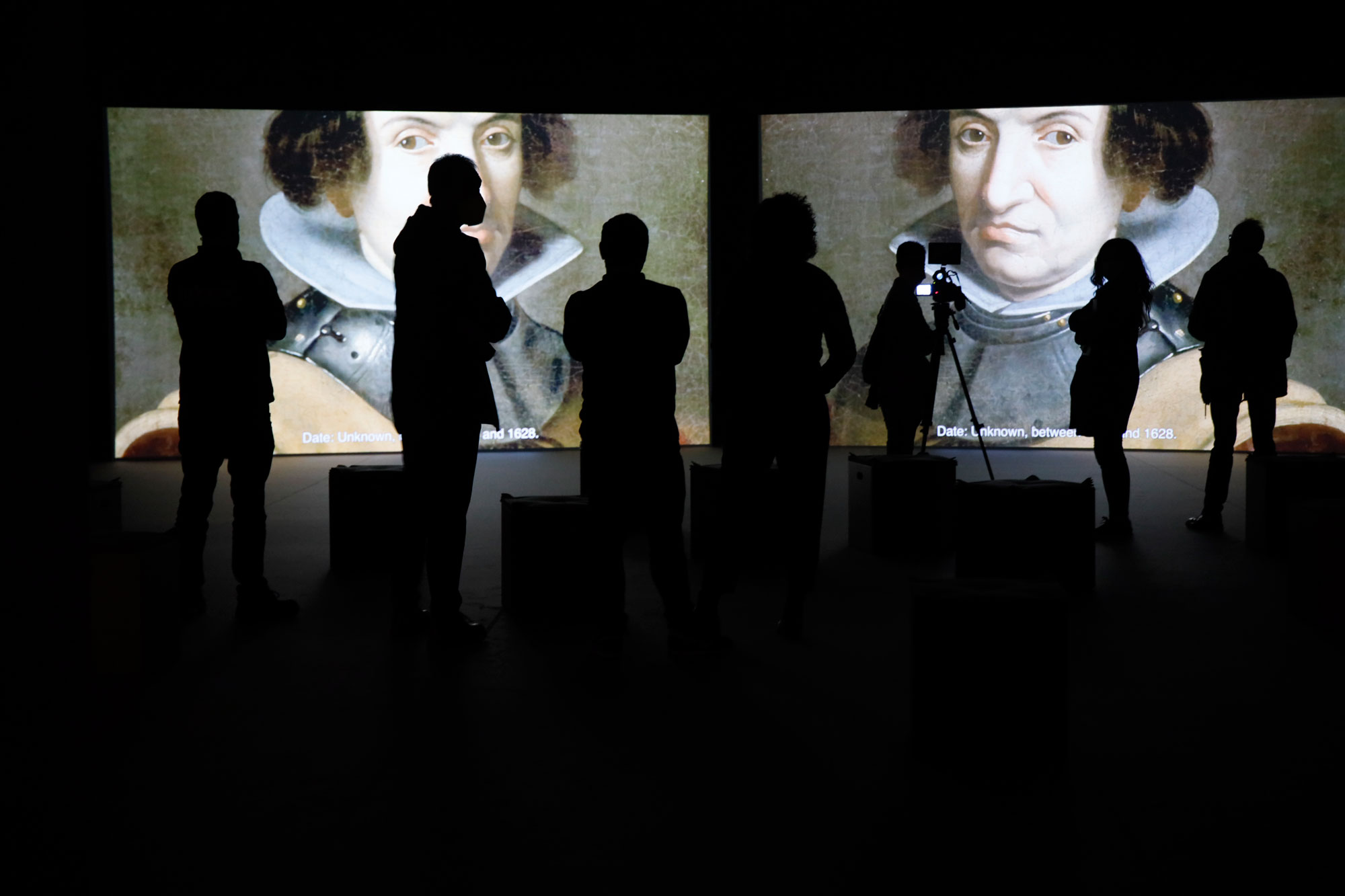Icon of Monja Alférez as a stimulus for trans and anticolonial debate
- Erauso, Katalina (Monja alfereza). Adventurous Gipuzkoan.” The Encyclopedia Lur tells us that in 1603, as a teenager, he left the convent and lived in male clothing. The encyclopedia refers to the hostilities he had with white men in America and the penalties they caused him, but not to the privileges he gained by participating in massacres against indigenous people.

Among these privileges, the name of the second and the permission for the king and the pope to continue living as Antonio Erauso, although transvestism was a sin and crime. The cultural saturation of the history of Monja Alférez is infinite: novel, theater, films, comics and an international explosion of academic articles from the 17th century to the present day. Two aspects of Catalina/Antonio Erauso have opened the debate: gender identity and authorship of the autobiography he published in Madrid in 1625. In all versions, he noted that he killed his brother in a mourning, but he was not proud to have exhausted an Indian child in a group.
Let's recognize at once: an adventurous girl was a bloody trans colonizing man. At a time when the inquisition sent gender dissidents on fire, it achieved a status of exception by shaping the patriarchal ideals of conquest and evangelization.
Rather than exaggerating the fascination for Erauso, in this LARRUN we invite to use this uncomfortable historical figure for self-criticism, centered on transfeminism and anti-colonialism, through the participants of the three artistic exhibitions that have gathered the history of Catalina/Antonio. The last exhibition, Una voz para Erauso, has remained until 26 September in Azkuna Zentroa in Bilbao. Presenting contemporary reading from transfeminism has been the work of Cabello/Carceller and Paul B. Objective of Commissioner Preciado. However, the title is a bit paradoxical because the portrait and story of Eraus have come to us, but not that of the colonized or enslaved gender dissidents.
.jpg)
B. PAUL PRECIADO: "It's an interesting demolition because it simultaneously violated and assimilated the rules of patriarchal masculinity."
“I am Antonio!” says Mursego A voice for Erauso. Epilogue for a Trans time in the song created for the piece of video art. Letra Helena Cabello y Ana Carceller are Madrid artists who aim to make a transfeminist re-reading of Erauso's autobiography. They consider that “heteropatriarchal power wanted to hear the story,” wrote Catherine Moja at the opening of Azkuna’s exhibition.
In the first part of the video, three modern non-normative people chat with the portrait of Erauso in a critical and ironic tone. They have told him that they have ancestors to dissidents of gender and sex, but that they are not proud of their biography.
Cabello and Carceller have been spinning around the idea of working Erauso for years. In the presentation of the exhibition they recognized that the character caused them both rejection and attraction: "He participated in the massacre and cultural destruction of the Spanish Empire, expressed racism and misogyny and lived in hand. We have worked from censorship to see what we can take advantage of in the current context.” So they prepare a journey between the present and the past: Performance based on Judith Butler's Gender Confusion essay and drag king photos mimicking Hollywood actors appear before Eraus reaches the tracks he left in the historical archives. Cabello/Carceller closes the exhibition with a copy of your request to the City of San Sebastian: Change the name of Catalina de Erauso de Amara Street to show Catalina/Antonio.
Paul B, of recognized international prestige. The philosopher Cuira Preciado has been the curator of the exhibition. Born in Burgos, she was a mother of Barakaldo and heard many stories of Monja Alférez in her childhood. “When you’ve been assigned female and you have another identification, as in my case, you know that the extraordinary journey that Eraus did has to do with your life.” Preciado highlights the need to find narratives of gender and sex dissent in local history, rather than looking at the United States. The interview for Pikara Magazine is summarized below.
"Whoever wishes to proclaim Erauso will have a problem, because it is a dark figure of high class who took advantage of the power networks of his environment in a process impregnated with violence, racism and misogyny"
Erauso has been considered a feminist, lesbian or trans icon.
It was all this, and it was neither. Currently, we think segmented sexual and gender identities. On the contrary, Eraus does not allow closed narratives, but diverse interpretations. Obviously, the flight from the convent can be understood as a process of gender emancipation. As for lesbianism, in biographies it has been presented as a kind of Don Juan, but it did not get married or meet any concrete woman. Talking about trans identity is even more difficult because in its day not even the notion of gender was developed. However, he used plasters to crush breasts, a practice reminiscent of binder. We are not interested in giving Eraus a definitive identity, but in exploring our relationship with history and the present. Whoever wishes to proclaim Erauso will have a problem, because it is a dark figure of high class who took advantage of the power networks of his environment in a process permeated by violence, racism and misogyny.
He constantly sought the protection of the Crown and the
Church… There was no allergic woman in the seventeenth century, so this name is a way to test gender. In contemporary society, validation fields have moved to the medical-legal realm. I myself have had to go through a validation process so that the passport reflects my identity, which allows me to travel peacefully. It is an interesting demolition, as at the same time it breached and assimilated the rules of patriarchal masculinity.
.jpg)
“Eraus used violence to legitimize his virility and respond to his vulnerability”
The historical trans and intersex
men I know have been linked to armies or guerrillas, such as Mexican colonel Amelio Robles or the Maqui Florencio Plá Messeguer.Cuando read Erauso's autobiography paid attention to what the author stands up for his violent actions and there is a point of exaggeration. He legitimized himself as a man through the use of violence. If Erauso was not a military figure involved in the conquest and high class, he would not be able to rename or receive recognition from the Pope. There were many more gender-dissident practices, but we have come up with those related to military areas or the judiciary, because there are administrative certifications. Just as the expansion of feminism has manifested a large number of women scientists or artists, the methodology of historical research should be changed so that other subjects appear.
From the current perspective, what are you interested in Eraus?
It helps to observe how the understanding of sexuality has gone from the theological-political paradigm to the scientific-medical-pharmacological. Erauso, for his survival strategy, had unfixed gender practices; when he returned to Europe, before it was the pope’s impulse, he reidentified himself as a woman and spent the last years as a man. Today, transs activists are proposing the departure of the binary regime. We need an administrative and legal paradigm that does not need to call for gender reassignments.
Some feminist discourses relate male transsexuality to patriarchal privilege. Does the history of Erauso confirm this prejudice? The virility of a
trans man will never be fully accepted in a heteropatriarchal society. I would say that the praise of Eraus's violence was due to the extreme vulnerability he lived in the armies of the 17th century. It is said that we move to the position of privilege with the transept, but it is not true. Even if it's a male passport, if we have to undress before the police, we're going to live a great vulnerability. It is transphobic to accuse the transforms of their male past and, at the same time, transphobic to think that transitory men integrate into the patriarchy.
Can we harness Erauso's history to respond to attacks on trans identity?
Erauso does not serve us to legitimize anything because in his colonial and national-catholic biography there is nothing to recover. It could inspire a hypothetical trans movement on the far right! Here's the most interesting thing: being a heroic figure, it allows us a more complex Reading in history.
Testimony of Josebe Iturrioz
Photo: Dani Blanco
“I met Erauso from a very young age. Women older than me from the feminist movement told me the story. At first, as with Joan of Arc, she was read in our environment as a lesbian referent; we did not understand her as transgender or transgender. I knew he went to America and he was a colonialist, but there was no very critical reading in San Sebastian. Antonio Erauso is the first referent of a trans legal man we have in history, which was widely accepted. But they let him live as a man until his death as a very colonialist and racist figure, adopting the hegemonic model of masculinity. Therefore, it is an important reference to know that in those times and throughout history there has been a quiet reality, but above all it is interesting to reflect on what model of masculinity and femininity we want to build people today. I am in favour of developing self-masculinity rather than reproducing the usual male chauvinist."
Episodes by Leslie Feinberg: Combative Transgender
“I saw a demonic thing,” wrote Spanish colonialist Álvar Núñez Cabeza de Vaca in the 16th century. “Sin, terrible, perverted, perverse, annoying, unnatural, gross, obscene.” These sensationalist chronicles about the people of the two Spirits were later used to “justify” genocide,
steal land and resources from the natives and destroy cultures and religions.
French missionary Joseph François Lafitau condemned the Bi Spiritu people in the west of the Great Lakes, Louisiana and Florida, but showed that the countries of origin did not have such prejudices: “I believe that this character is an honor…”, he wrote in 1724, “they participate in all religious ceremonies and the testimony of that extraordinary life makes them considered as high-level people.”
To summarize the reaction of the colonizers towards the people of the Two Spirits, the words of Antonio de la Calancha can be used. Calancha was Spanish in Lima. Calancha wrote that Vasco Núñez de Balboa during the expedition in Panama saw men dressed as women. The Balbo learned that they were sodomites and cast the king and forty of his dogs to eat them; a very direct act, which corresponds to an honorable and Catholic Spaniard.”
Basque bibliography on Erauso
Erauso Kateriñe (1962): Historical drama written by playwright Katalina Eleizegi.
Catalin Erauso (1976): Translation and adaptation of the autobiography, by historian Iñaki Azkune.
Catalina de Erauso (2013): Biography written by journalism professor Aitor Zuberogoitia.
Catalina de Erauso (2008): Pastoral Care of Maite Ithurbide.
Academic articles
Catalina Erauso was Basque? Identity between gender, sexuality and nation (Catalina Erauso was Basque)? Identity representations between gender, sexuality and nation). Amaia Alvarez Uria.
Gender and identity in 17th century society. (Gender and identity in 17th century society). Nerea Aresti.
The following interviews are also part of this Larrun:
Joan den urte hondarrean atera da L'affaire Ange Soleil, le dépeceur d'Aubervilliers (Ange Soleil afera, Aubervilliers-ko puskatzailea) eleberria, Christelle Lozère-k idatzia. Lozère da artearen historiako irakasle bakarra Antilletako... [+]
Despite the black skin and curly hair, they remained invincible men, with the intelligence and resentment of human beings.” So he wrote about the slaves CRL James in the book Jakobino Beltzak, who masterfully narrates the Haitian revolution. So many brutalities, torture and... [+]
Malin, Burkina Fason eta Nigerren Frantzia haizatua da. Mendebaldeko potentziek haien eragina galtzen ari dira Afrikako kolonia zaharretan. Afrika frankofonoko populazioa bereziki gaztea da, eta ez du frantses kolonialismoa zuzenki ezagutu. 35 urtez peko gazteek populazioaren... [+]
Last week I was at the Olaso Tower in Bergara, in a talk about symbol acquisition.
Behind the symbols there is a story, and it is evident that the symbols we have before us – shields, flags, monoliths, street names… – tell the story that suits the empire.
It is not in... [+]
II. Following the World War, the process of decolonization of the countries of Africa and Asia began. In fact, the soldiers of these countries participated in the triumph of Germany and its fascist allies, and “as a thank you” those subordinate countries had to be recognized... [+]
In the bar Gato de Pamplona was singing screaming, the famous song of curse of Malinche: "Eta oker horretan, pasako grandeza eman egingo dugu, eta oker ants three hundred years Geratu gara slaves."
Having a birth in South America, especially in Colombia, is nothing comfortable,... [+]























